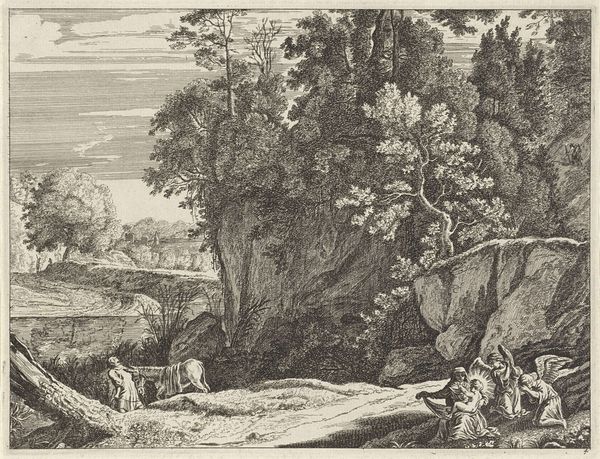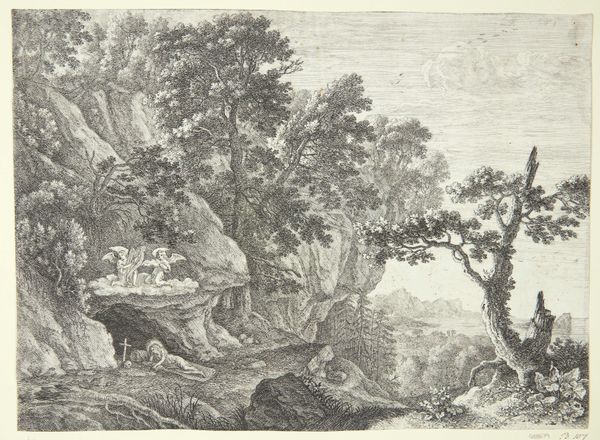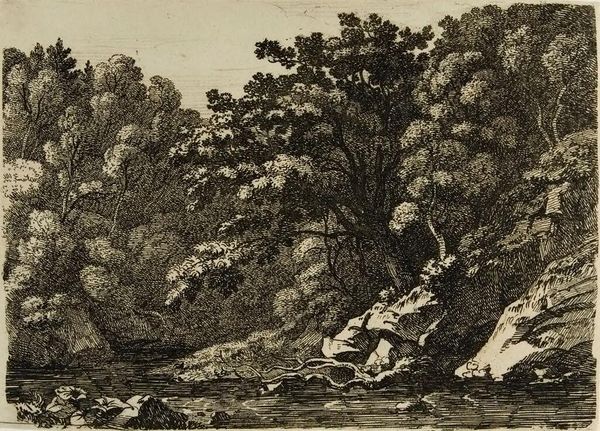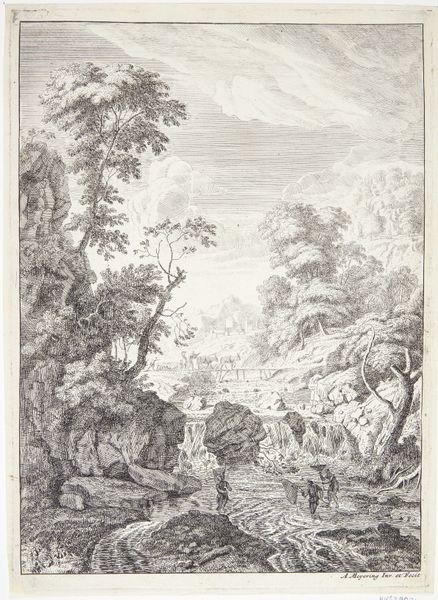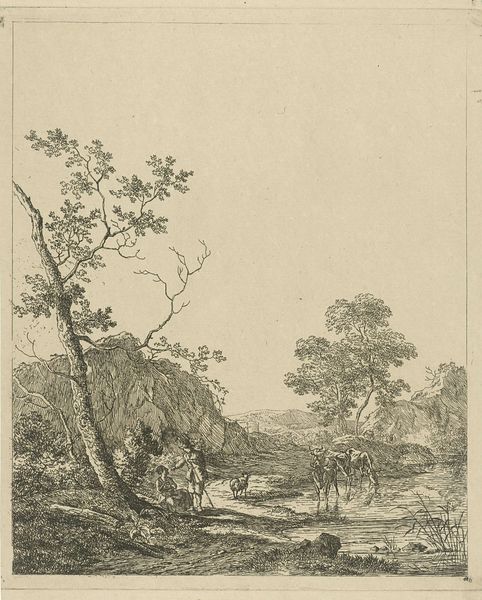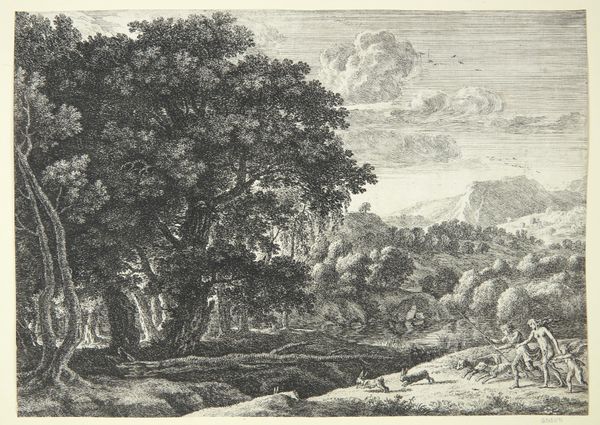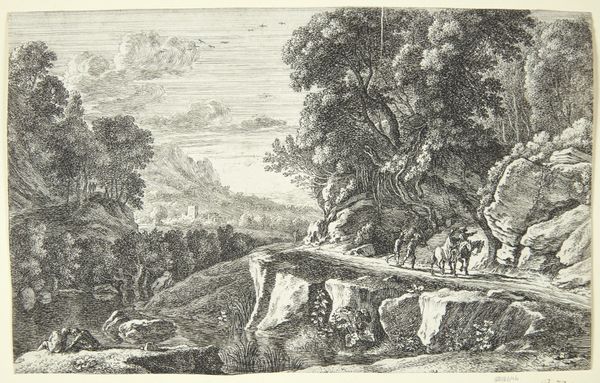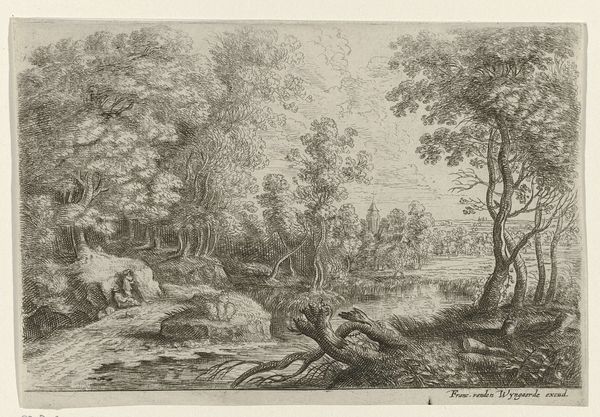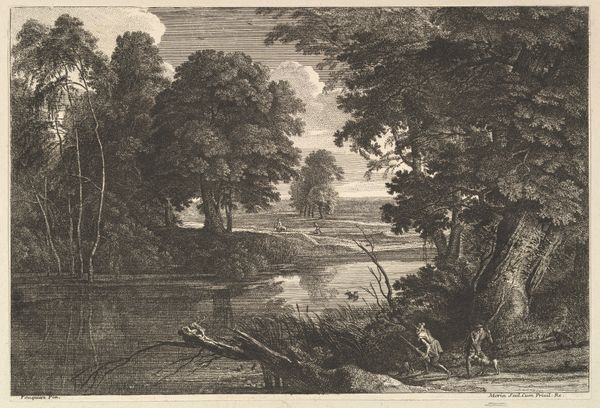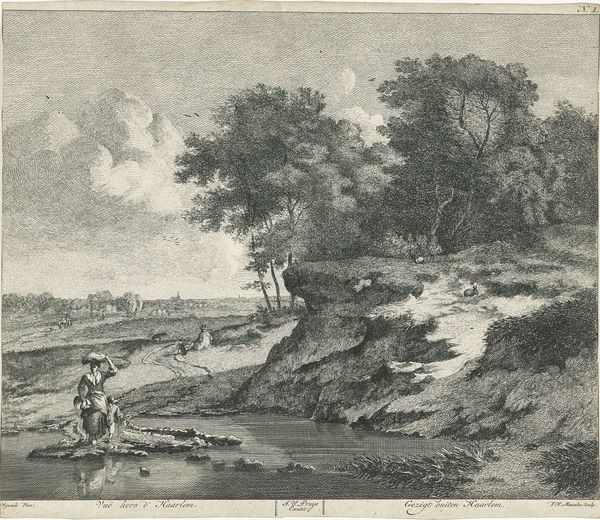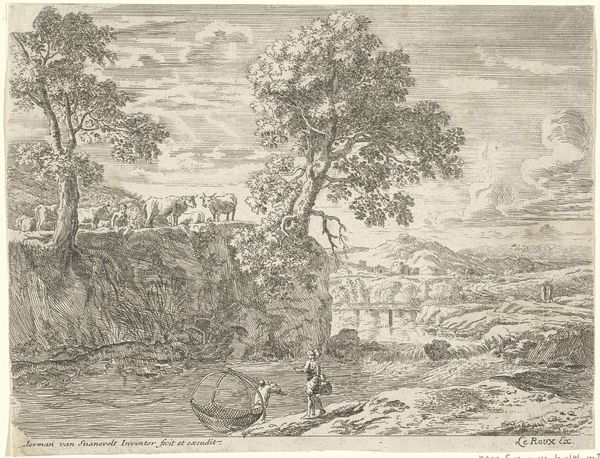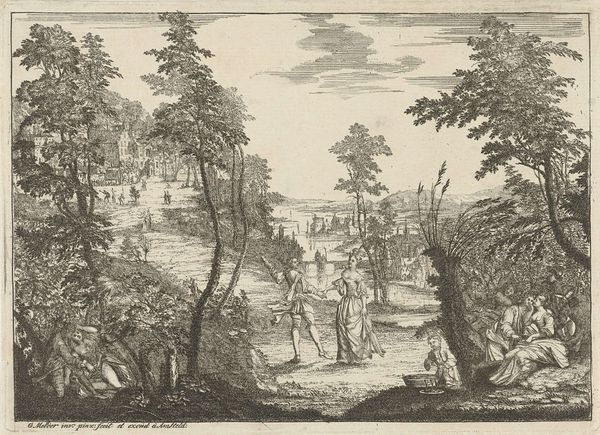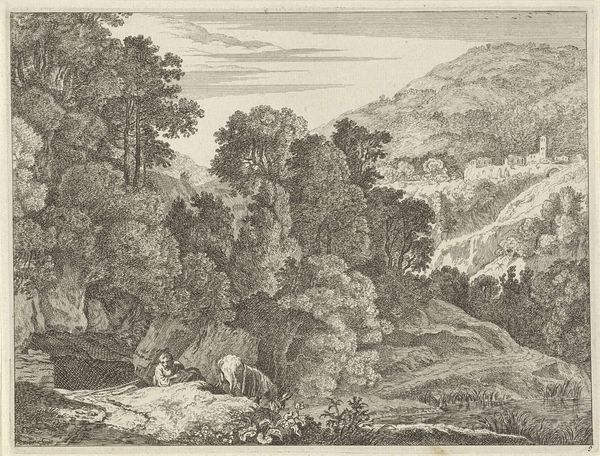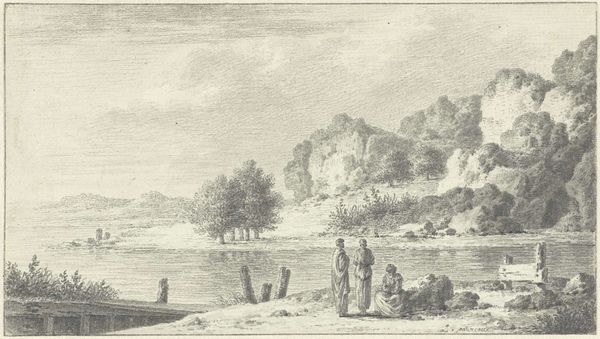
drawing, print, etching, paper
#
drawing
#
baroque
# print
#
etching
#
landscape
#
paper
#
genre-painting
Dimensions: 40 × 175 mm
Copyright: Public Domain
Curator: Karel Dujardin’s etching, "The Packer with Two Donkeys," made in 1660, captures a moment of everyday life within a specific socio-economic context. Its delicate lines and carefully constructed composition give insight into 17th century Dutch society. Editor: It feels so pastoral, almost idealized, despite being so grounded. I am particularly drawn to the density of the lines used to form the old tree versus the sparse and gentle application to create the falls in the background. The contrast almost places you in this moment with the two donkeys and the resting man. Curator: I'm particularly interested in unpacking this seemingly simple pastoral scene. Think about who had the leisure to commission or purchase such a work, who owned and profited from the labor of these "packers"? It's about examining class structures embedded within representations of labor. Editor: Absolutely. It's fascinating to consider the actual labor involved in producing the print itself. The materials – the copper plate, the inks, the paper – and the craftsman hours speak to a different kind of labor. I think that connection with the making of things should not be forgotten. Curator: The presence of the donkeys prompts questions about how non-human animals were essential in this social setting. It offers avenues for intersectional discourse surrounding ethics and marginalized subjects in a broader frame. How labor is mapped across all beings represented. Editor: Precisely. Etching, as a process, also involves a kind of collaboration. The artist, the materials, even chance plays a part, allowing acid to eat away at the plate. How the artist harnessed such methods and what those images conveyed must always include how they came to exist in physical form. Curator: The interplay of light and shadow further enhances this, presenting labor as picturesque while overlooking realities. By challenging this picture, we unearth how art can unintentionally reproduce dominant cultural ideologies about servitude and work, and perhaps encourage change. Editor: Agreed. Focusing on the production, we get a clearer view of both its place in that time and space. In its material form, art connects the world across spans of time by connecting with what that object does to those who still interact with it now. Curator: Yes, and perhaps also offer paths for present action, now enlightened about what may or may not be equitable in those historical patterns. Editor: Right. The dialogue between historical conditions, materials, production, and ideology truly adds layers to our experience.
Comments
No comments
Be the first to comment and join the conversation on the ultimate creative platform.
